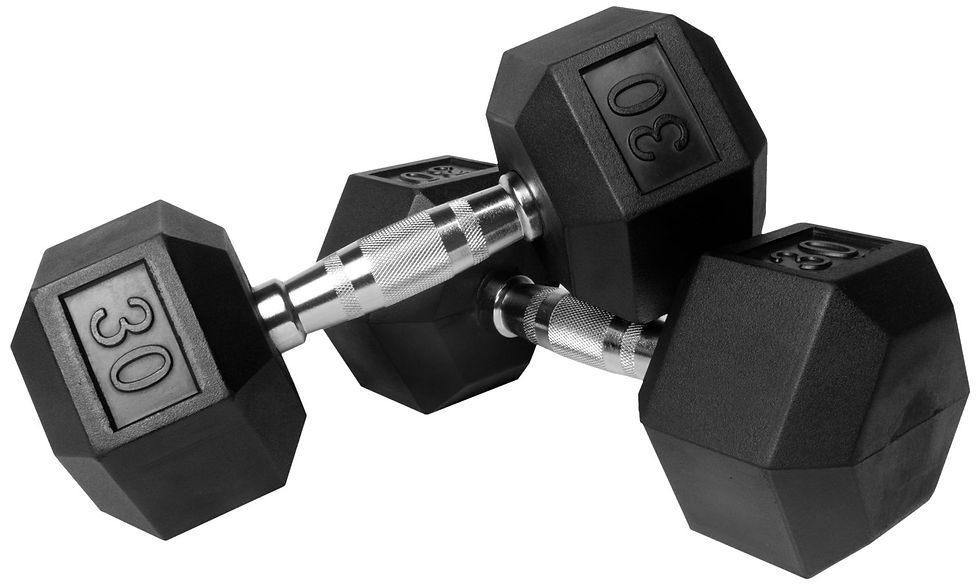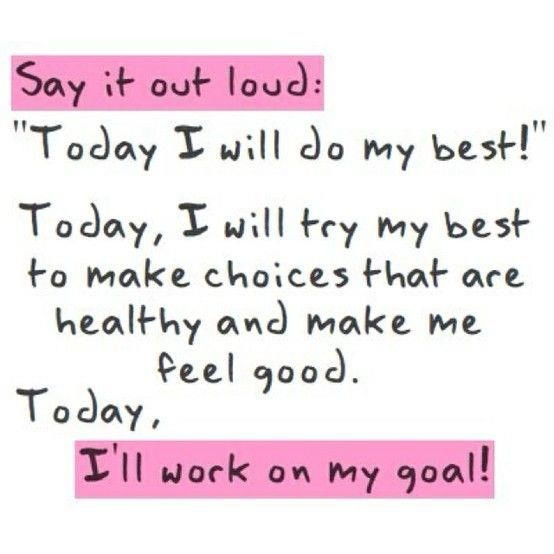The Start to Your New Beginning
- Justin Grinnell
- Jan 7, 2015
- 10 min read
In my 13 years as a personal trainer, January seems to be the “New Beginning” not only for
people with Resolutions, but also for trainers. There is an exciting anticipation of more clients and member that will flood the gyms, health clubs, and training studios ready and roaring to get back to the fitness grind.

Let’s be honest here, that means more money for trainers and health clubs, right? Not necessarily. The key to long-term success in anything is sustaining something for an extended period of time.
For trainers, that is taking care of your clients and members so they get results and keep coming back.
For clients and gym members, this means committing to something, giving it your all, and sticking to your goals.
It’s unfortunate that the gym/personal trainer industry has a horrible attrition rate. For a few months out of the year, clients, members and trainers are pumped up. When Spring Break passes, we often start to get a little burned out and the fire fades away.
So, how can we fix this? Here is a quick list of things to think about:
Commit to exercise for the long-term. Short-term results typically go away fast. You shouldn’t focus ONLY on short-term goals. Instead, set some long-term goals and then set some short-term goals to get you there. Think habits. More on this later.
You need to set a schedule. If you don’t set a workout and eating schedule, you will always wonder when you will workout next and where your next meal is coming from. Don’t treat exercise and eating right as something to do when it is convenient. Instead, start setting a schedule for you to follow. This will ensure that you make it a part of your life and not just an afterthought.
Start slow. You don’t need to workout 6-days a week and eat chicken, egg whites and broccoli at every meal. You simply need to pick a couple days a week to workout, and fix one of your nutritional habits at a time. Build off that and go from there.
Not all exercises are created equal. I always encourage people to do what they like. If you enjoy a certain type of exercise modality, you are more likely to stick with it for the long-term. If you like to do Yoga, run, or play pick-up basketball, keep with it! Just give me 2 days of strength training and we are good to go. Lifting weights by using large movements like squats, push-ups, pull-ups, deadlifts and kettlebell swings will help burn the fat and build the muscle you want. It will also improve your performance and reduce the risk of injury when partaking in any other fitness activity.
Make slow progress, not fast progress. We all love to experience instant gratification, it’s only human, but you must set reasonable expectations. If you go into it thinking that it will take time to make progress, you are right. If you stick to your plan, make small changes and progressions each week, you will experience a “snowball” affect of success.
You should write it down. If you are someone that has been exercising for a long time, know what you are doing, eat the way you should 80-90% of the time, and are comfortable and happy with you current condition, you may get away with not keeping a food and exercise journal. For everyone else, you have to. If you do not track what you are doing, you will
A) Never know why or why you are not making progress and,
B) You will not have a clear sense to weather you are making habits changes.
It is also helpful to journal emotional triggers that made you skip a workout or eat poorly, times when you find it hard to stick to your program, and your energy level and motivation that day. Sleep is also something that may be useful to journal. Keeping a journal will help you better understand if you are committing to exercise for the long-term, have a good schedule down, starting slow, doing the right exercise program, and making slow but consistent progress.
What you should do now… The complete program
If you have read my past blogs, articles and Facebook posts, you will know that I am not into making drastic changes. In my experience, totally changing your eating and exercise habits right from the get-go is just too tough to maintain long-term. Since it is the New Year, I am going to make an exception. I am going to outline a program that will help get you going in the right direction. There will be three parts to this program.
The 28-day habit-changing guide
A sample meal plan
A sample workout plan.
I suggest starting with the 28-day habit-changing guide, especially if you are currently not eating very well and not exercising. The sample meal plan and workout plan is simply a template for you to work towards during the 28-day habit changing guide.

If you feel like you can jump right into the sample meal plan and workout program, by all means, go for it. If you start to notice that you are not sticking to the plan, go back to the drawing board and start with the week one habit-changing guide.
Habit changing guide
Here is a quick and simple guide to follow to start you off right in January. It is not magic and is not that big of change, but if you do it correctly, you will see some good results in 28-days.
Pick ONE of these habits each week that I listed below and master that habit for the first seven days.
The following week add another habit. You will now have two habits to master.
The third weeks add another. That is three habits to master.
The final weeks pick a fourth habit to follow. You now have four habits to master in week four.
This does not look like much on paper, but you will be surprised if you commit for 28-days and master four different habits. Your 28-days could look like this:
Week One: Buy a kettlebell and jump rope for home and use it everyday
Week Two: Buy a kettlebell and jump rope for home and use it everyday AND
Take a green food supplement
Week Three: Buy a kettlebell and jump rope for home and use it everyday, Take a green food supplement and drink 60 ounces of water a day.
Week Four: Buy a kettlebell and jump rope for home and use it everyday, take a green food supplement, drink 60 ounces of water a day and drink a super shake each day

Your four habits for the month can be whatever you want. It’s up to you to determine the habits that you need to make and change. Below is a list of my favorites to get you started.
Move 21-minutes a day
Buy a kettlebell and jump rope for home and use it everyday
Take a green food supplement
Drink 60 ounces of water a day
Take a fish oil supplement
Eat extra virgin coconut oil each day
Drink a super shake each day
Eat protein at each meal
Eat veggies or fruit at each meal
Drink a protein shake before or after a workout
Plan your food choices each day
Make a grocery list and shop twice a week
Sleep at least 6-8 hours each day
Take at least 10 deep breathes each day
Twice each day at work, stretch for 5 minutes
Do nothing for 10 minutes each day and/or meditate
Don’t drink calorie-containing beverages
Avoid processed food 90% of the time

What happens after the 28-days? You simply repeat the plan and pick new habits to follow. Just make sure you stay on top of the previous 28-day habits.
We all know dramatic changes rarely last. This new Years, start slow, build off each habit, take your time, and find success.
Sample meal plan
Before I lay out a sample meal plan for you, I want you to think about a few critical things:
You need to eat enough food to fuel your body. I am a big fan of intermittent fasting (IF). There are many benefits to IF that I feel can help you reach your goals. There are a couple problems with IF. Cutting too many calories can lower you metabolism, leaving you hungry and primed to regain the fat that you lost. You also may find yourself eating the wrong types of foods after a long fast and when cutting calories too low. To fuel your body, you need to eat.
You need to eat better food. Piggybacking off #1, you will not make progress by cutting calories and eating processed foods when you are hungry. Sure, if you are in a caloric deficit and are eating gluten-free this and fat free that, you will lose weight. This will not stick long-term. As Josh Hillis Says, the co-author of Fat Loss Happens on Monday, weight loss will be determined by the quantity of the food you eat, but body composition (fat and muscle) will be determined by your food quality. Eat 80% of your diet in whole and minimally processed foods that you like. Eat 10 percent in whole and minimally processed foods that you don’t like, but don’t hate. This will allow you to explore your pallet. If you follow those two rules, eat 10% of whatever you want! You have to let yourself indulge once in a while for your sanity and to kick-start your metabolism. This also allows you some wiggle room when you are in a crunch.
Make sure to get a wide variety of foods in each day. I am a creature of habit and like to eat the same stuff most of the time. This is a guide to help you get an array of macronutrients (protein, carbs, fats) and micronutrients (vitamins, minerals, phytonutrients) in each day. Try and include at least one to two servings from each food group.
Meat and other protein-rich foods, including eggs and protein powder.
Fat-rich foods, such as nuts and seeds, butter, olive oil, extra-virgin coconut oil, fatty fish, and avocadoes.
Fibrous vegetables, this means ANY vegetables. Corn does not count!
Starchy foods, sprouted grain breads and pastas, rice, potatoes and beans.
Milk and other dairy products that includes organic cheese and yogurt. Try and buy organic.
Fruit, fresh or dried. Just eat fruit. No one ever got fat form eating too much fruit.
Here is what I do to start people off on a base meal plan.
If you workout 2 hours a week, multiply the body weight you want to reach (say you weigh 190 and want to weigh 180), by 11-12 calories. If you workout 3 hours a week, multiply your target weight by 12-13 calories. If you workout 4-5 hours a week, multiply your target bodyweight by 14-15 calories.
Another rule I like to follow is the protein rule. Guys should aim for 1 gram of protein per pound of their target bodyweight, and women should aim for .75 grams per pound of target bodyweight.
Here is an example meal plan for a male that workout about 4-5 hours a week, weighs 190 pounds and wants to lose 10 pounds of fat. Keep in mind that there is no perfect calculator to figure out how many calories you need. This is simply a guide. The best way to figure out how much you need to eat is to keep a journal and adjust where needed.
Meal 1: 3 eggs cooked any style and 1 medium sized piece of fruit (any)
Meal 2: 6 ounces of fish, 1 cup of brown rice, 1 cup black beans, grilled onions and peppers
Meal 3: 6 ounces of grass-fed beef, 2 ½ cups sprouted grain or whole-wheat pasta, ¼ cup organic marinara sauce, arugula salad with balsamic vinaigrette
Snacks and post workout: 2 scoops grass-fed whey protein powder, 2 tbsp. almond butter and 1 apple
2,610 calories
180 grams protein
90 grams fat
270 grams carbohydrates
Sample Workout
The key to any weight loss workout program is weight training. To increase you metabolism, you need to work the whole body at one time with movements that recruit a large amount of muscles. The more muscle you stimulate, the better.
When you lift a significant amount of weight, your body will produce more fat burning and muscle building hormones, and burn more calories in the long run. You want to devote 80 percent of your workout to large movements. Pushing, pulling, squatting, lunging, hinging and carrying weight will be your best options.

The other 20 percent will include smaller movements that include mobility work, core work, Turkish get-ups, and arm work.
I also like to include “metabolic finishers” at the end of a weight-training workout. When you perform a high intensity met-con circuit while your energy reserve are low, you produce a high metabolic cost. In order to burn fat, you need that high metabolic cost.
Strength training 3-days per week should be plenty to produce results and to optimize recovery. I know that some of you “go-getters” like to workout more than 3-days per week, so I am including some cardiovascular workouts if you choose to do some extra workouts on your non-weight training days.
Warm up
Soft Tissue Work (foam roll and ball work on the glutes, quads, t-spine, shoulders, etc.) as needed for five minutes
Any correctives or mobility drills (hips, T-spine, ankle, shoulders) as needed for 5 minutes
Turkish Get-ups 1-3 per side
Jump Rope or jumping jacks for two minutes to activate the nervous system
Workout 1
Start with 2 sets of each exercise in a circuit fashion. Add one set per exercise each week until you reach 5 sets of each.
Push (push-ups, dumbbell bench press, or dips) 8 reps
Hinge (kettlebell deadlift or single leg deadlift) 8 reps
Pull (chin-ups or cable pulldowns) 8 reps
Carry (farmers carry or goblet carry) 40 meters
Metabolic Finisher
Kettlebell Swings perform 5 rounds of 20 seconds of swings followed by 40 seconds of rest. Add 1 round each week until you reach 8 rounds.
Workout 2
Start with 2 sets of each exercise in a circuit fashion. Add one set per exercise each week until you reach 5 sets of each.
Pull (1-arm dumbbell rows or TRX Inverted Rows) 12 reps
Squat (goblet squat or split squats) 12 reps
Push (1-arm kettlebell press or standing dumbbell shoulder press) 12 reps
Core (rollouts or side plank) 12 reps for rollouts or 20-30 seconds each side for planks
Metabolic Finisher
Perform 10 burpees, then rest 30 seconds. Repeat for 5 rounds. Add 1 round each week until you reach 8 rounds.
Workout 3
Start with 2 sets of each exercise in a circuit fashion. Add one set per exercise each week until you reach 5 sets of each.
Lunge (walking lunges or reverse lunges) 10 reps
Push (1-arm bench press) 10 reps
Pull (1-arm TRX row or 1-arm DB row) 10 reps
Carry (1-arm overhead carry or suit case carry) 40 meters
Metabolic Finisher
Kettlebell Swings perform 5 rounds of 20 seconds of swings followed by 40 seconds of rest. Add 1 round each week until you reach 8 rounds.
Cardio options for off-days
Pick one of the following:
Concept 2 Rower
Max meters in 10 minutes
3,000 meter row
4 x 500 meter sprints. Rest 2-minutes between each.
Airdyne Bike
3-mile ride
Max calories in 10 minutes
6 rounds of 30 seconds hard followed by 30 seconds of rest
Jump Rope
5 sets of 100 revolutions
As many revolutions as possible in 10-minutes
The time is now!
Now that you have a plan, it is now time to get after it! Just make sure to follow my rules and principles above to create long-term success. You don’t want to be healthy and fit for the short-term, so stay focused and take it one step at a time. Let’s crush it this 2015!

By: Justin Grinnell










































Comments